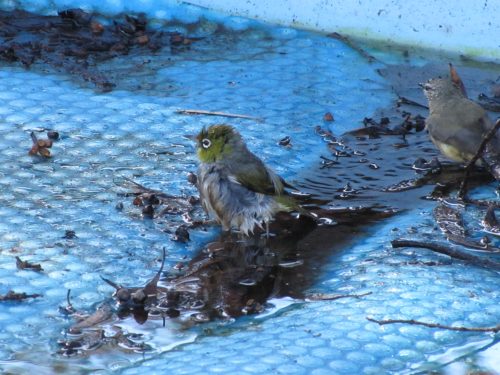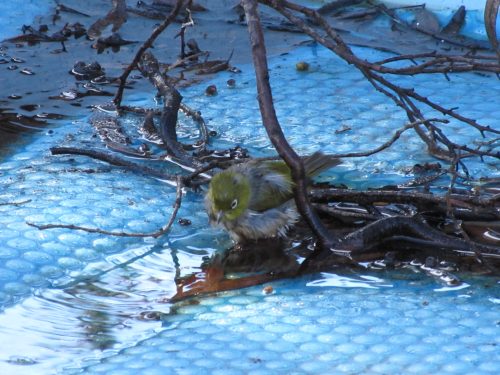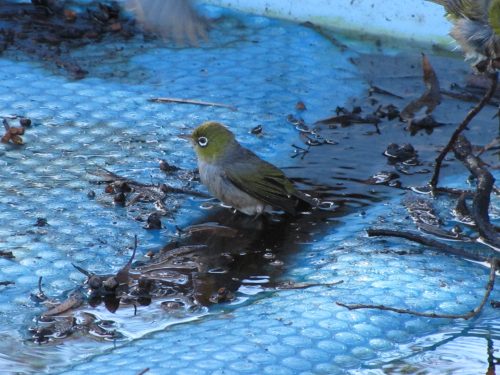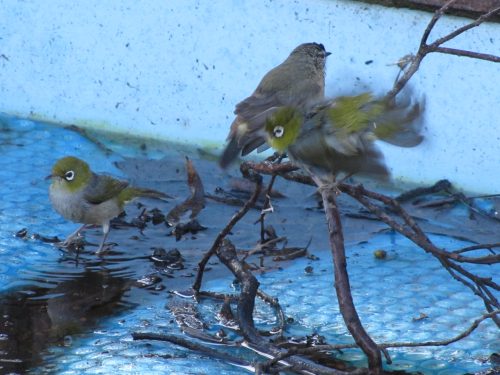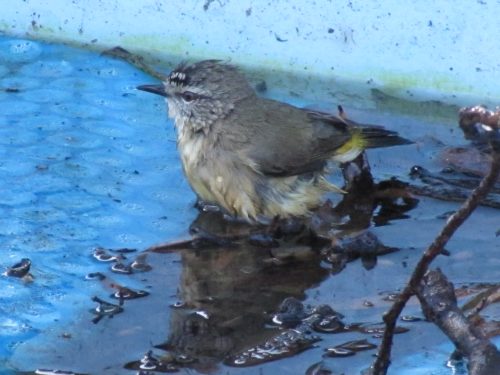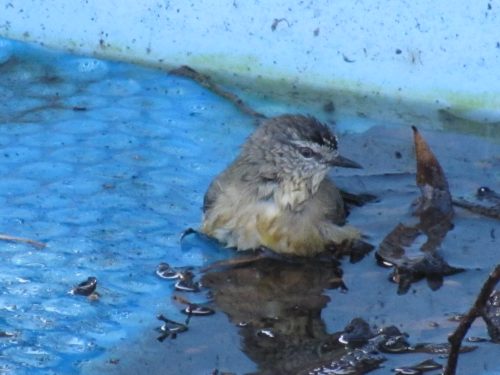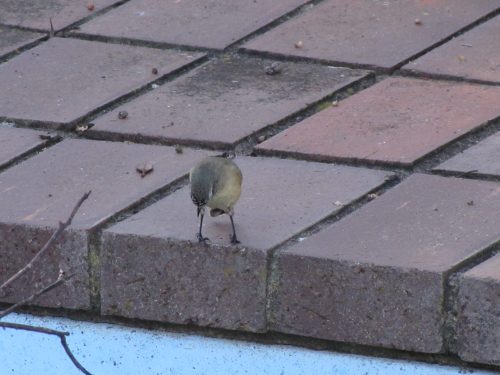Silvereyes come for a bath
In my last article here I posted some photos of Yellow-rumped Thornbills bathing in the small pools of water which gather after rain on our swimming pool solar blanket. On the same day, a small number of Silvereyes also came for a drink and to bathe. I have shown these in today’s post.
Our swimming pool is in our backyard, a short distance from our back veranda. On nice sunny days when it is not too hot in the middle of summer, or not too cold in the middle of winter, we enjoy sitting on the veranda to have our lunch. Sometimes we take a mid-morning break there for a cup of tea or coffee. We have also taken an afternoon break when gardening.
On all of these occasions, we enjoy the constant parade of birds in our garden, perched on the fence or in the trees nearby, and on the pool cover like the Silvereyes shown today. I often have my binoculars and camera at the ready while we sit there. On this occasion, I managed to get many photos of the Silvereyes and the Yellow-rumped Thornbills. A Grey Fantail was also fluttering around, but you will have to return in a few days’ time to see those photos in my next post.
The water that gathers on our swimming pool cover in the winter and spring months are visited by many birds over the course of each day. In addition to the species I have already mentioned, another frequent visitor is the Magpie Lark. Both the male and the female come on a daily basis, often perching on the pool safety fence and calling loudly, their antiphonal singing a delight to hear. (Antiphonal: when the two birds sing a duet in parts.)
Our resident Australian White-backed Magpies also come to drink, and the bossy Red Wattlebirds will chase the smaller birds off. White-plumed Honeyeaters flit in and out nervously, while the Peaceful Doves take their time, gradually getting closer and closer until they gather the courage to stoop and drink. The Crested Pigeons also come for a drink, though they are usually more interested in mating displays than drinking.
The Welcome Swallows occasionally swoop low over the pool but more often they are seen much higher in the air. The many House Sparrows and Common Starlings come frequently to drink and bathe, but the resident Mallee Ringnecks rarely do so; they prefer to feed in the nearby trees. The Willie Wagtails, however, are frequent visitors to this part of the garden.
As you can see, it is never boring in our garden if you are a birder like myself.
Good birding,
Trevor
PS: Over the years, I have written articles about all of the birds mentioned in this article. To see photos of them, and to read more about each of them, use the search facility in the top right-hand corner of any page.
Thornbills come for a swim
In our garden, we have a swimming pool. At the moment, it is more of a swamp. It will need a LOT of cleaning before the warm summer days come blowing in from the north over the coming months. We enjoy our pool on those hot, summer nights because it is so relaxing. And the exercise is good for us, too. (When we have the energy!)
We also have a solar blanket on the pool. This has a number of purposes:
- It warms the temperature of the water so that we can enjoy an extended swimming season, even in the cooler months.
- It reduces the need for chemical treatment to keep the water safe for swimming.
- It reduces evaporation; our water prices in South Australia are some of the highest in the world and the blanket minimises the amount of topping up the pool needs, thus saving money.
- It keeps things like leaves from nearby trees out of the water which saves me time and effort cleaning the pool.
With the solar blanket on during the winter, the rain we have had tends to gather on the surface in pools. Many of our resident bird species take advantage of this fact. They come to either drink or to bathe in the water. Recently, a small flock of Yellow-rumped Thornbills did just that. they had a glorious time splashing around in the water. They totally ignore the nearby bird baths. Why use a bird bath when you can bathe in your own swimming pool?
Good birding,
Trevor
Further reading:
